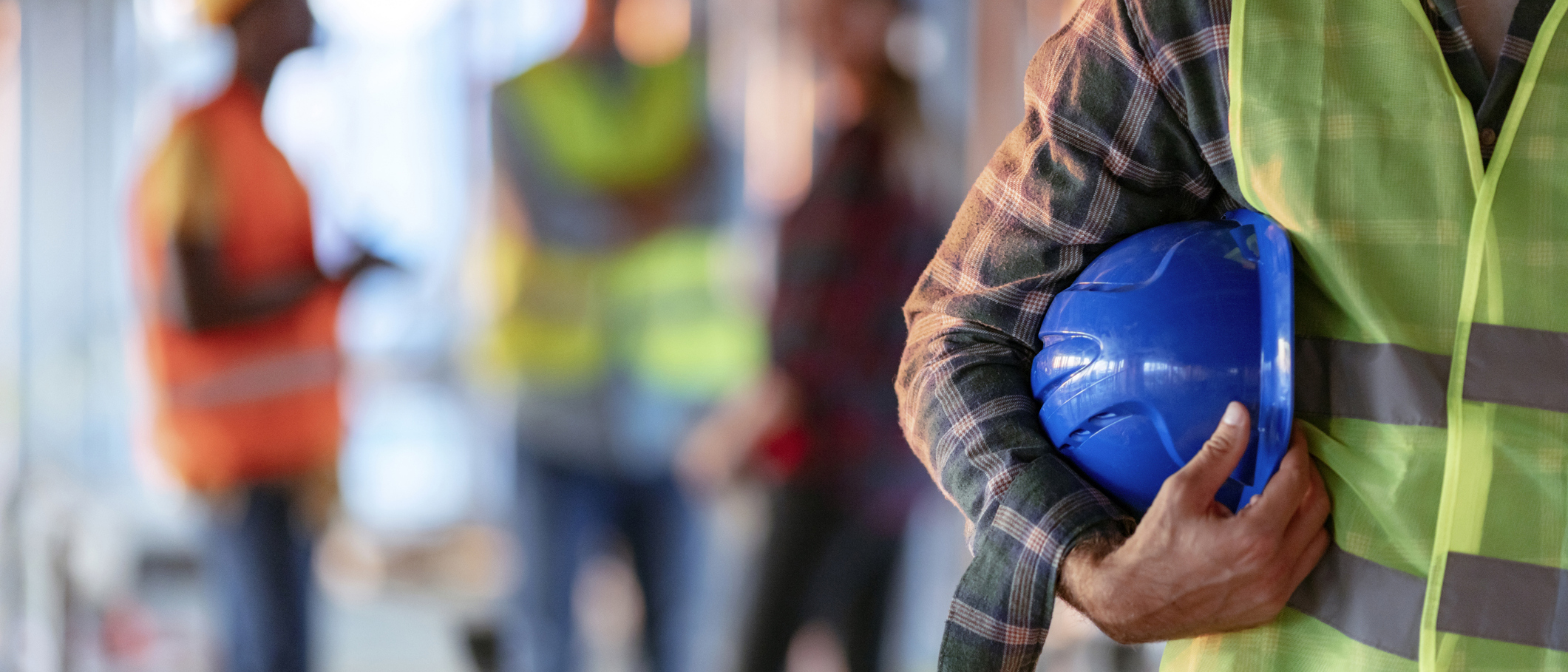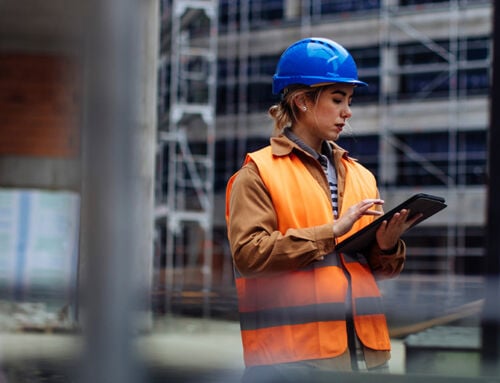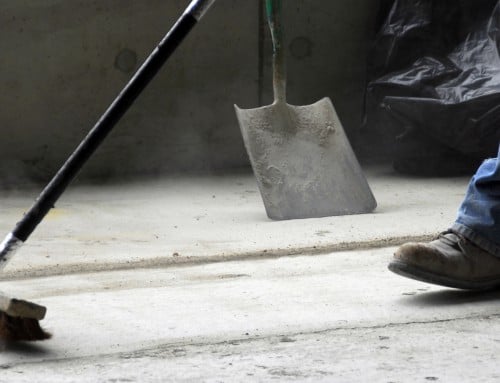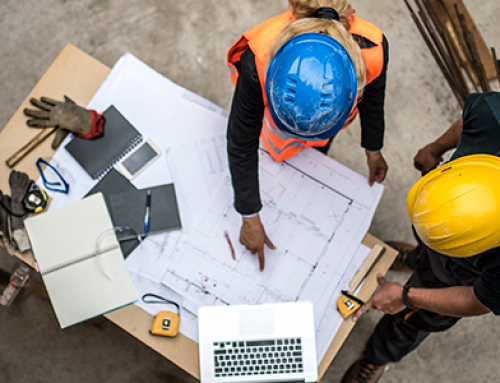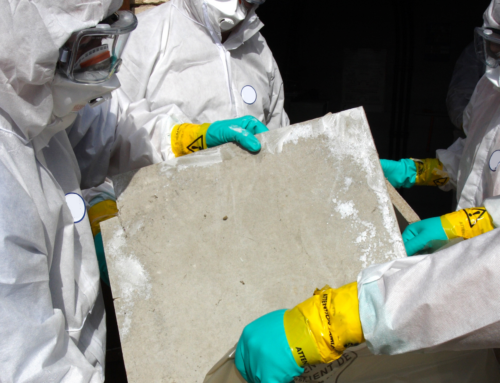It’s not exactly business as usual as construction sites start to open back up across the country. Without a vaccine or herd immunity, there’s still a risk of spreading the COVID-19 virus, so any business – including a construction site – that is reopening needs a plan for infection control.
Use a multi-faceted approach
Infection control requires a multi-faceted approach, including updated hygiene and cleaning practices, changes to the physical environment, and new behaviours by employees. It also requires developing a COVID-19 Response Plan—based on government and industry best practices—that you can roll out across all job sites. That plan must also be communicated to all employees, contractors, and trades, and updated as necessary.
Before workers return to a job site, the physical site may need to be rearranged for infection control purposes. The Canadian Construction Association has come up with standardized COVID-19 protocols for all construction sites across the country (which will be updated as new best practices emerge).
Break up the job site
Among its recommendations, the CCA suggests the job site “is to be segregated to the extent possible in zones or other methods to keep different crews/trades physically separated at all times.” There should also be a limit placed on how many people are in each zone, as well as limits on the number of people in eating areas, washrooms, and other common areas.
This could mean staggering, splitting, or alternating shifts, so there are fewer people in high-traffic areas at once. The CCA is also encouraging voluntary shift offsets and time gaps between shifts. This could mean you’ll have fewer workers on site at any one time, so project timelines may need to be adjusted.
Of course, it’s not always easy to maintain physical distancing on a job site, especially when working in crews. For work that has to be done in close proximity, the CCA recommends formalizing procedures and requiring personal protective equipment (PPE) to minimize risk. Where work is done in crews, come up with a plan to minimize or eliminate the crossover of workers between crews, with staggered breaks and lunch schedules.
If you’re working on a commercial site, all non-essential personnel should be banned from visiting the site. For deliveries, zones should be identified and only accessible to those making or receiving deliveries. Ideally, supplies should be unloaded by receivers (using appropriate PPE) while deliverers remain in their vehicle.
But if you’re working on a residential construction project that’s currently occupied, workers and occupants should be physically segregated wherever possible. If it involves emergency work where an occupant is suspected to have contracted COVID-19 or is under self-isolation, the CCA says the work can be carried out “provided workers are equipped with nitrile gloves, Tyvek suits or coveralls, and facial/respiratory protection.”
Cleaning is essential
Time gaps between shifts can allow for proper cleaning and disinfecting protocols, such as cleaning and disinfecting frequently touched surfaces in common areas including washrooms and eating areas, as well as shared tools, equipment, and vehicles (which should be disinfected between users and at the end of shifts).
Most people aren’t experts in cleaning protocols—and they can be surprisingly detailed. To take the guesswork out of cleaning, the Public Health Agency of Canada (PHAC) has published a guide on cleaning and disinfecting public spaces during COVID-19.
You’ll need to develop your own policies and procedures around cleaning protocols related to your specific job site (or sites); you might consider appointing someone to be in charge of inspections to ensure these protocols are being followed.
Surfaces frequently touched with hands are most likely to be contaminated, including doorknobs, handrails, elevator buttons, light switches, cabinet handles, faucet handles, tables, countertops, and electronics, according to the PHAC. While it’s not yet known how long the virus lives on surfaces (or remains viable), early evidence suggests it can live on objects and surfaces from a few hours to days.
PHAC recommends using products that clean and disinfect at the same time, such as pre-mixed store-bought disinfectant cleaning solutions or wipes. It also recommends using approved hard-surface disinfectants that have a Drug Identification Number (DIN)—an eight-digit number designated by Health Canada that confirms the product is approved and safe for use in Canada.
Another way to deal with frequently touched surfaces is to simply remove them, such as changing out taps, paper towel dispensers, and garbage cans to hands-free models, and removing doors or door handles where possible. Doors can also be equipped with quick release mechanisms.
Enforce good hygiene
Along with more rigorous cleaning protocols comes more rigorous hygiene practices such as handwashing. While the Canadian public is told repeatedly by government health officials to wash their hands, it doesn’t mean everyone is doing it properly or frequently enough. While workers may remember to wash their hands before eating, for example, they may forget to do so before having a cigarette. Post signage as a constant reminder for workers to remain vigilant.
Ideally, workers should have easy access to soap and water, but barring that, provide alcohol-based sanitizer. The PHAC, along with Health Canada and the Centers for Disease Control and Prevention, recommends that workers avoid touching their mouth, nose, or ears with unwashed hands and sneeze into a tissue or the crook of their elbow.
Consider using face masks
Non-medical face coverings are also recommended as a potential mitigant to catching and transmitting the virus—but on a job site, they shouldn’t impair vision or otherwise interfere with tasks.
“Wearing a homemade facial covering/non-medical mask in the community has not been proven to protect the person wearing it and is not a substitute for physical distancing and hand washing,” according to the PHAC in its guidelines for the appropriate use of non-medical masks. “However, it can be an additional measure taken to protect others around you, even if you have no symptoms.”
Monitor your workers and ensure they monitor themselves
Workers also play a role in infection control; if they feel their health or safety is at risk, it’s ultimately up to them if they want to continue working. Under provincial occupational health and safety legislation, employers are required to keep workers and work sites safe—and workers have the right to refuse unsafe work.
Workers also have a responsibility to keep each other safe. That means complying with detection and response measures, and allowing for the tracking and monitoring of their movements between zones and sites.
Before entering a job site, for example, workers must confirm they’re not currently exhibiting flu-like symptoms such as fever, tiredness, coughing, or congestion, and that they haven’t been in contact with someone with a confirmed or probable case of COVID-19 (to the best of their knowledge).
COVID-19 has a lengthy latency period, so someone may become infected and not know it for up to 14 days. That means construction firms and contractors should track and monitor the movements of their employees (while maintaining their privacy). If an employee does test positive for the virus, the employer will be asked to provide information to local health authorities about where the employee worked and which other employees may have been exposed.
Any worker exhibiting symptoms should complete an online self-assessment, call their provincial public health authority, or contact their family physician. Workers who may have been exposed to the virus should contact their supervisor, stay home, and self-isolate.
Your next steps
Most people are anxious to get back to work, but it’s important not to fuel a resurgence in cases of COVID-19. Infection control protocols on job sites will help keep workers—and their families—safe while continuing to flatten the curve.
To learn more about protecting your business, visit our contractor’s insurance page today.
This blog is provided for information only and is not a substitute for professional advice. We make no representations or warranties regarding the accuracy or completeness of the information and will not be responsible for any loss arising out of reliance on the information.
